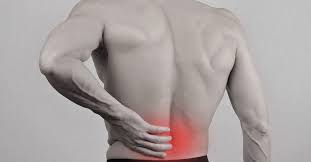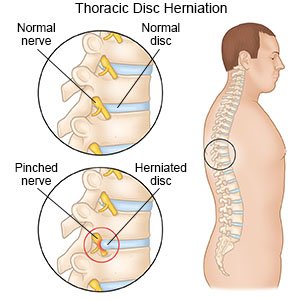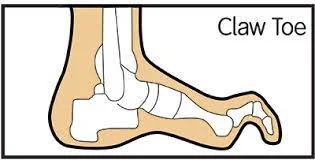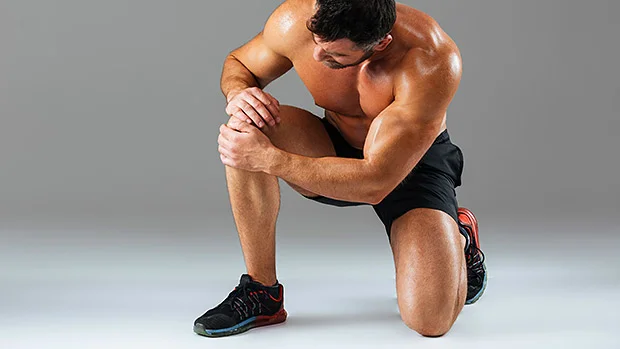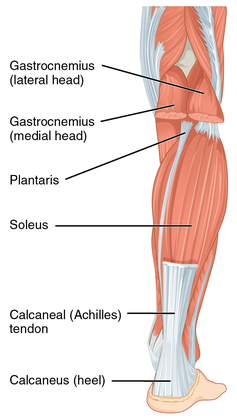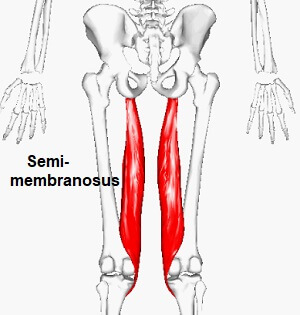Muscle pulled in back
Table of Contents
What is a Muscle pulled in back?
- Muscle pulled in Back is an injury either to the muscle or a tendon of Back also called Back muscles strain, while a back sprain is due to the over-stretching or tearing of a ligament.
- The back is a complex structure of bone & muscle, supported by cartilage, tendons & ligaments, & fed by a network of blood vessels & nerves.
- The back especially the lumbar, or lower back bears much of the body’s weight during walking, running, lifting & other activities. In general, it makes sense, that injuries to the lower back such as strains & sprains are common.
What are the back muscles?
- The back muscles are the main structural support for the trunk (torso). These muscles help you move the body, including the head, neck, shoulders, arms & legs. The back muscles work together to allow you to bend over, twist, turn the head & extend the back. These muscles also help you sit & stand up straight. They play an essential role in supporting the spine & helping you breathe.
- The back muscles start just under the skull, extend across the shoulders & down to the lower back just above the hips. These muscles attach to the ribs, vertebrae (bones in the spine), shoulder blades & neck.
The back muscles are divided into three-layer – The superficial layer, the intermediate layer, and the Deepest layer the muscles.
Superficial back muscles :
The superficial back muscles are the muscles situated just beneath the skin. Within this group of back muscles, you will find the latissimus dorsi, the trapezius, levator scapulae, & the rhomboids.
Intermediate back muscles :
The intermediate muscles are the erector Spinae. They contain the longissimus, iliocostalis, & Spinalis muscles. Their attachments further divide these muscles, & they all have a commonest tendinous origin. They play an important role in the movement of the thoracic cage & flexion of the upper vertebral column & head.
Deep back muscles :
The deep back muscles included the semispinalis, multifidus, & rotatores. These muscles help to stabilize the vertebral column & also have a role in proprioception & balance. Moreover, these muscles help with the movements of the vertebral column & also, help to maintain posture.
Superficial layer: splenius (splenius Capitis, splenius Cervices, latissimus dorsi, trapezius, levator scapulae, & the rhomboid minor & rhomboid major)
Intermediate layer: erector spinae (iliocostalis, longissimus, spinalis)
Deep layer: transversospinales (semispinalis, multifidus, rotatores)
The deeper layer of Muscles: segmental muscles (Levatores Costarum, Interspinales, & Intertransversarii)
The function of back muscles
- The back muscles are the major structural support for the trunk (torso). These muscles help you move the body, including the head, neck, shoulders, arms & legs. The back muscles work together to allow you to bend over, twist, turn the head & extend the back. These muscles also help you sit & stand up straight. They play an essential role in supporting the spine & helping you breathe.
- Superficial muscles: These muscles help you move the arms, shrug the shoulders & keep the spine straight.
- Intermediate: The intermediate muscles assist with breathing. They attach to the ribs & help your chest expand & contract when you inhale & exhale.
Deep muscles: These muscles stabilize the spine & help you bend, rotate, flex & extend the back. They also help you control the trunk, neck & head.
Where do back muscle strains occur?
- In the majority of cases, strain pain occurs in the lumbar spine (the lower back), because this is the area that bears the most weight, especially when moving, twisting, and bending. Back sprains are caused when ligaments the tough bands of tissue that hold bones together become overstretched or torn.
Classifications of a Muscle pulled in back
- muscles pulled in back (Muscle strains) can be categorized into 3 grades, based on severity:
Grade 1: Mild damage to individual muscle fibers (less than five % of fibers) that damages minimal loss of strength & motion.
Grade 2: More extensive damage with many muscle fibers involved.
Grade 3: Completely rupture of the muscle or a tendon.
Causes of a Muscle pulled in back
- Twisting or pulling a muscle or tendon can result in a pulled.
- It can also occur by a single instance of improper lifting or by over stressing of the back muscles. A chronic (long-term) pulled usually results from overuse after prolonged, repetitive movement of the muscles & tendons.
- A pulled also occurs after a fall or sudden twist, or a blow to the body that forces a joint out of its normal position. All of these conditions stretch one or many ligaments beyond their normal range of motion, causing injury.
- Curving the lower back excessively.
- Being overweight.
- Having weak back or abdominal muscles, &/or tight hamstrings (muscles in the back of the thighs).
- Playing sports that involve pushing & pulling such as weightlifting and football also increases the risk of a low back injury.
- Extreme physical exertion.
- Falling.
- Bending or crouching repeatedly.
- Lifting heavy objects if you are not in proper alignment or shape.
Symptoms of a Muscle pulled in back
- Pain that gets worse when you move.
- Muscle cramping or spasms (sudden uncontrollable muscle contractions)
- Decreased function &/or range of motion of the joint (difficulty walking, bending forward or sideways, or standing straight)
- In some cases, the person may have a feeling of pop or tear at the time of an injury.
- Muscle pain & stiffness anywhere in the back.
- Muscle weakness reduced mobility & limited range of motion.
- Spasms can be extremely painful.
- Swelling, or bruising.
- Pulled muscles usually feel sore, tight, or achy.
- Pain that feels hot, tingling, or electric is more likely occuring due to an irritated nerve root, not a pulled or strained muscle.
- Local tenderness & inflammation. A muscle pulled might become inflamed & feel tender to the touch. Muscle spasms & cramps can cause intense pain & temporarily limit mobility, as the affected area in the lower back may be swollen for a few days.
- Diseases, some types of arthritis & cancer can contribute to back pulled.
- Psychological conditions. People prone to depression & anxiety appear to have a greater risk of back pulled or pain.
- Smoking. Smokers have increased rates of back pain. This may cause because smoking prompts more coughing, which will lead to herniated disks. Smoking can also decrease blood flow to the spine & increase the risk of osteoporosis.
How is the muscle pulled in back is diagnosed?
- The cause of back muscle pulled is diagnosed based on the symptom history, a physical examination, & testing if needed. The the doctor is likely to ask you questions about the characteristics of the pain, & whether you have any underlying physical or mental health conditions that could be contributing to abdominal pain.
Questions may address the following aspects of the back muscle pulled:
- Where it’s located
- How intense it is
- Whether it’s dull, stabbing, burning, or cramping
- Whether it comes & goes
- When you experience or notice it most
- Whether it radiates outward to other areas of the body
- How long you’ve had it
- Whether any activities or the actions seem to make it worse or better
- The doctor may also ask about the overall health history, any recent injuries, & whether you might be pregnant.
- If the doctor suspects a serious health condition that may need treatment, any of the following tests may be used to help diagnose the cause of the back muscle strain:
- Blood, urine, or stool tests
- X-ray of the abdomen
- Ultrasound of the abdomen
- Computerized tomography (CT) scan of the abdomen
- Barium enema (colon X-ray)
- Endoscopic procedures (inserting a tube with a tiny camera through your mouth or rectum to view areas inside the digestive tract)
- Electrocardiogram
Treatment of muscles pulled in back:
- Muscle pulled in back injury causes include overstretching, improper technique while playing sports that require running, turning, and jumping, lifting heavy objects, laughing, coughing, sneezing, etc.
- Treatment of a muscle pulled in back injury is not so difficult until some severity. There’s no way to splint the core & it’s nearly impossible to fully rest these muscles. As sometimes it has been seen in many cases that there is no treatment required for back muscle pulled injury rather than rest, as it will heal me up to the second grade of a back abdominal pulled.
Below are basic things to advise the person who suffers from it:
- Avoid exercise to allow the injured muscle for healing.
- Avoid activities that cause pain or spasm of the back muscles.
- Practice gentle stretching. It should not be painful or excessive, as this may slow the process of healing.
- Apply ice to an injured area in the acute phase, or during the first 48 hours after an injury. It’s also helpful to apply ice after activities.
- Apply heat before activities to loosen the muscle.
- Take proper medications if necessary or required. Back muscles play a major role in the body, from maintaining balance or stability up to the core of the body. Proper treatment or care should be taken while the back muscle was injured.
Several strategies can help you prevent muscle pulled in back:
- Avoid sudden, jerky movements of the trunk.
- Be careful when lifting heavy objects. For example, lifting with the legs or asking for help.
- Use good form when playing sports, lifting weights & participating in other exercises.
- Don’t overdo exercise.
- Eat a healthy diet with lots of fruits & vegetables & plenty of water. This will encourage regular bowel movements & minimize constipation risk, which can help prevent a hernia.
- Maintain healthy body weight.
- Perform a variety of ab & core-strengthening exercises regularly.
- Rest when you feel discomfort or pain.
- Stretch every day, as well as before & after exercise.
- Tighten the ab muscles when you cough or sneeze.
- Warm up before starting the exercise, increase the intensity gradually, then stretch well at the end.
Back muscle pulled gets better over time with rest.
These steps can help to get ease pain:
- Alternate between applying an ice pack & warm compresses to the injured area.
- Start to do exercise in a progressive manner by learning stretching & strengthening exercises.
- Take non steroidal anti-inflammatory drugs (NSAIDs) to ease pain & inflammation.
- Wear an abdominal brace to support the stomach muscles & minimize swelling.
General immediate treatment:
- Start by using the P.R.I.C.E. principle – Protection, Rest, Icing, Compression, Elevation – beginning with the application of an ice pack for 20 minutes. The ice pack can be reapplied every 2 hours for the first 2 to 3 days post-injury. Rest is another component of the P.R.I.C.E. principle but it is a little more difficult with an abdominal strain. Injuries to the arms or legs can easily be protected & rested through the use of crutches, slings, or braces. However, splinting the trunk of the body is not such an easy task. To protect & rest the back muscles, the athlete may need to limit his/her activities for a few days until the pain decreases.
1. Cold therapy:
- Performing cold therapy as soon as possible can help to relieve bleeding, pain, & swelling. Cold therapy may help reduce inflammation.
- To do this:
- Get an ice pack, gel pack, or bag of frozen vegetables which you can use to ice the affected area.
- Wrap a cloth or a towel around the cold pack. This will help protect the skin & reduce the risk of added irritation.
- Gently apply the cold pack to the injury for 10 to 15 minutes at a time.
- If you can, repeat this process each hour during the first few days of the injury.
2. Heat therapy:
- Using heat therapy can help relax the muscles & relieve tension, which helps reduce pain. Heat also increases blood flow to the affected area. This can promote healing & reduce inflammation.
- To do this:
Get a heating pad or patch.
If you don’t have a ready-made compress, you can fill a clean sock with rice & tie it off. Microwave the sock for 1 to 2 minutes. - Make sure it is not uncomfortably hot to the touch.
Apply a warm compress to the affected area for up to 20 minutes at a time.
If you can, repeat this process every hour for the first few days of the injury.
3. Over-the-counter (OTC) painkillers:
- Non steroidal anti-inflammatory drugs (NSAIDs), such as ibuprofen (Advil) & naproxen sodium (Aleve), may also help relieve swelling & inflammation.
- You can also take pain relievers such as aspirin (Bayer) & acetaminophen (Tylenol), but they won’t have an effect on inflammation.
4. Compression:
- You may consider wearing a core binder or bandage to help compress the core. The applied pressure can help to minimize the movement & swelling.
- Talk to the doctor about how long and how tight you should wear the binder to resolve the symptoms. Choose a binder that is made up of hypoallergenic material to avoid any allergic reaction, too.
5. Rest:
- Rest as much as you can & avoid any activities that cause stress or strain. This is especially important if you have an athletic injury.
- Try to find a comfortable way to sit or lie down, & use this time to do something that’s relaxing. Take it easy until your pain subsides completely. This could take up to a few weeks.
6. Exercise:
- Once the symptoms have subsided, you can begin core & abdominal strengthening exercises.
Surgery:
- Surgery for back pain is very rare. If a patient has persistent pain & nerve compression which can lead to muscle weakness herniated disk surgery may be an option.
- Fenestration: In this operation ligamentum flavum bridging the 2 adjacent laminae is excised & the spinal canal at the affected the level is exposed.
- Laminotomy: In addition to fenestration, a hole is made in the lamina for wider exposure of the structure.
- Hemi-laminectomy: The lamina on one side is removed.
- Laminectomy: In Laminectomy, the laminae on both sides, with the spinous process, are excised. Such a wide exposure is necessary for a big, central disc that causes cauda equina syndrome.
Physiotherapy Treatment :
Modalities:
- Modalities giving an adjunct to evidence-based treatment in patients with Lower Back Pain.
Transcutaneous electrical nerve stimulation (TENS):
- TENS, the use of electrical impulses over surface electrodes to provide symptomatic relief by modifying pain perception, has not been seen to be effective for chronic lower back pain.
Electrical stimulation:
- High-voltage pulsed galvanic stimulation has been used to reduce muscle spasms & edema in patients with acute Lower Back Pain. The use of electrical stimulation typically is limited to the initial stages of treatment to allow patients to progress to the more active treatments in restoring normal range of motion & strength.
Ultrasound therapy:
- Ultrasound therapy machine is a deep-heating modality that has been shown to improve the distensibility of connective tissue & facilitate stretching. Ultrasound therapy machine is contraindicated in acute inflammatory conditions because it might worst the inflammatory response. In addition, the Ultrasound therapy machine is contraindicated over a previous laminectomy site.
Superficial heat:
- This modality produces effects to a depth of 1 to 2 cm and has been shown to reduce pain & muscle spasms.
Short Wave Diathermy (SWD) :
- Continuous Short Wave Diathermy(SWD) treatment with exercise seemed to be more effective in subsiding pain in patients with chronic low back pain than other treatment modalities.
Strengthening exercise :

Transverse Abdominal Contraction:
- Lie down on the back with both knees bent, the feet flat. contract your core muscles by pulling the belly button towards the back.
- Hold for 10 secs & relax. Repeat 10 times.
- Perform 2 times per day.

Bridging:
- Lie down on the back with both knees bent.
- Squeeze the buttocks together then slowly lift the buttocks off the floor, keep the stomach tight & buttocks contracted. Slowly lower & release to starting position.
- Hold the Bridging position for 5 secs & repeat 10 times.
- Perform 2 times per day.
Gluteal Squeeze:
- Lie down on the back with both knees bent & squeeze the buttocks together.
- Hold for 10 secs & relax. Repeat 10 times.
- Perform 2 times per day.
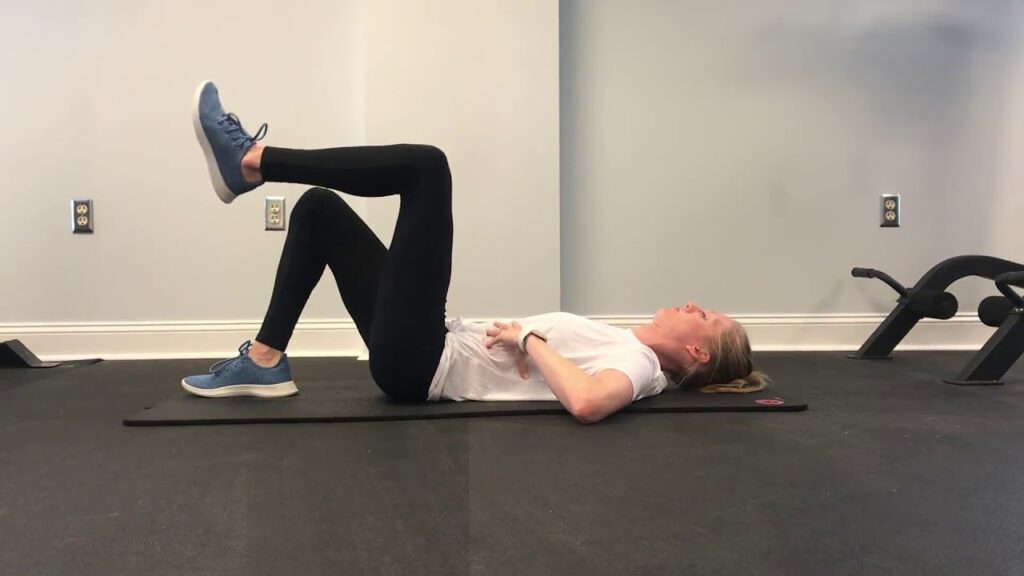
Transverse Abdominal March:
- Lying down on the back with both the knees bent.
- Contract the abdominal muscles by bringing the belly button toward the
- spine. Slowly march by lifting one leg off the ground, then change to the other. Continue pulling the belly button toward the
- spine during the transverse abdominal march exercise.
- Repeat 10 times on each side.
- Perform 2 times per day.

Wall Squats:
- Stand with the back against a wall with feet approximately 1-2 feet away from the wall. With feet, shoulder-width apart,
- squat approximately ½ of the way down, and make sure that the knees do not go past the toes.
- Hold Wall Squats position for 10secs & repeat 10 times.
- Perform 2 times per day.

Lying lateral leg lifts:
- Lying on the one side with both the legs together.
- Keep the lower leg slightly bent.
- Draw the belly button inside the stomach/abdomen to engage the core muscles.
- Raise the top leg about 18 inches, keeping it straight & extended in the air.
- Hold the position for 2 to 5secs.
- Repeat 10 times.
- Turn onto the other side of the body & repeat, lifting the other leg.
- Perform 3 sets on each side.
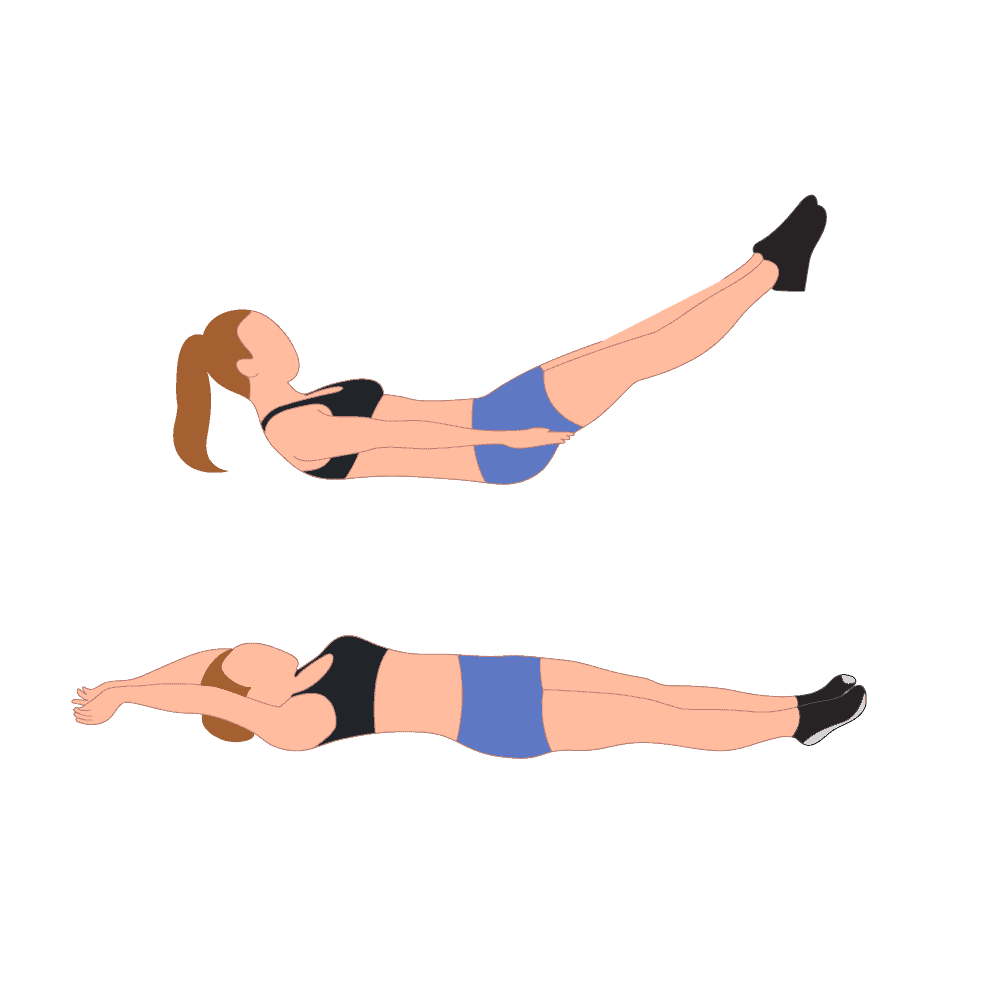
Pilates:
- Lay on the back & lift the shoulders off the floor while placing the hands next to the hip. Lift the feet up & hold.
- Make sure the back touches the floor. If the back bows then raise the legs higher for a rounder back. Keep the legs straight. Hold for 10-20 secs.

Plank:
- Start on your toes & hands or elbows & keep the body straight like a board. Your feet should be hip-width apart & the hands or elbows shoulder width.
- Hold this position. Make sure the hips do not drop too low or rise too high.
- Hold for 20-30 secs.
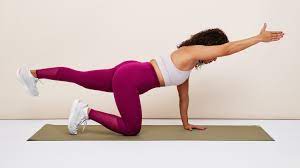
Bird dog:
- The bird dog engages both your abdominal and back muscles, so it’s an ideal core-strengthening move. It also challenges your coordination, balance, and stability.
- Start on all fours, hands below your shoulders and knees below your hips.
- Tighten your core. Lift and straighten your right leg to hip level. Simultaneously lift and extend your left arm to shoulder level, palm down. Pause.
- Repeat with your left leg and right arm.
- Start with 1 set of 8–12 reps.
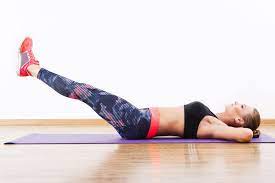
Leg raise:
- Lie face up with your legs extended and hands at your sides or tucked underneath your hips for extra support.
Slowly raise your legs, keeping them together and as straight as possible, until the soles of your shoes are facing the ceiling.
Then, slowly lower your legs back down. Don’t let your feet touch the floor; instead, keep them hovering a few inches off. - That’s 1 rep.
As you do this move, make sure to keep your lower back flat on the floor. If you’re having a tough time doing that, don’t lower your legs as far.
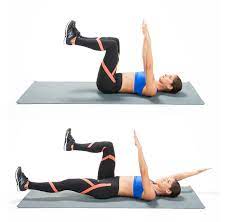
Dead bug:
- Lie face up with your arms extended toward the ceiling and your legs in a tabletop position (knees bent 90 degrees and stacked over your hips). This is starting position.
Slowly extend your right leg out straight, while simultaneously dropping your left arm overhead. Keep both a few inches from the ground. - Squeeze your butt and keep your core engaged the entire time, lower back pressed into the floor.
Bring your arm and leg back to the starting position.
Repeat on the other side, extending your left leg and your right arm.
Butterfly sit up:
- Lie face up with the soles of your feet together, knees bent out to the sides. Reach your arms overhead. This is starting position.
- Using your core, roll your body up until you are sitting upright. Reach forward to touch your toes. That’s 1 rep.
- Slowly lower back down to starting position and continue immediately into the next rep.
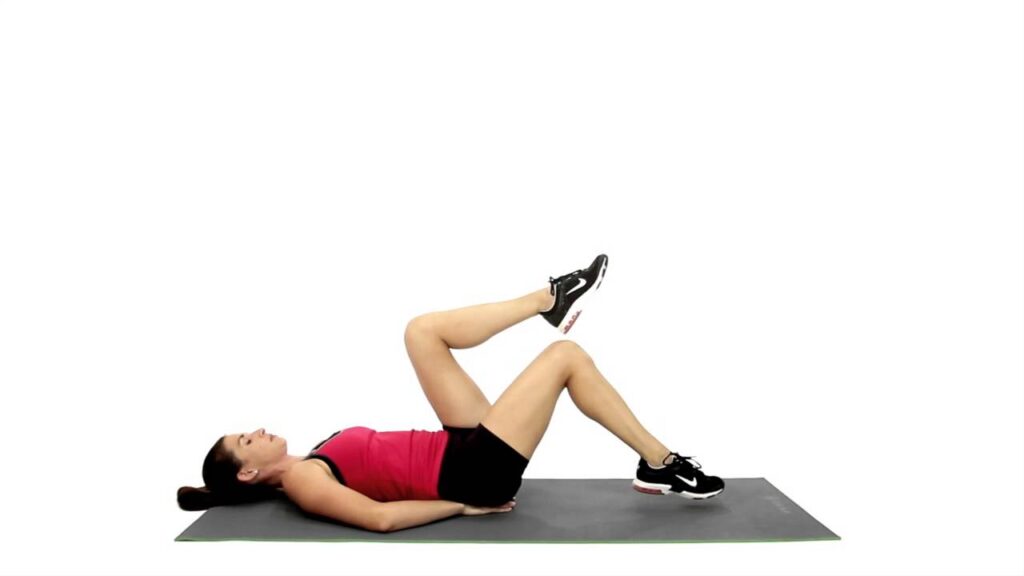
Supine Toe Tap:
- The Supine Toe Tap is a basic Pilates exercise. It engages your core muscles while working your glutes, hips, and legs.
- Toe taps also place minimal pressure on your spine. If you have back pain, toe taps may be an ideal alternative to crunches.
- Start on your back. Lift your legs, knees bent to 90 degrees. Place your hands at your sides, palms down.
- Tighten your core. Lower your right foot and gently tap the floor, keeping your left leg still and your back flat.
- Raise your right leg to return to the starting position. Repeat with your left leg.
- Start with 1 set of 8–12 reps.
Stretching Exercise:
Precautions that can help effectively stretch the muscles without any injury:
- Wear comfortable clothing that would not bind or constrict movements
- Do not force the body into a difficult or painful position, stretching should always be pain-free.
- Move into a stretch slowly & avoid bouncing, which can cause muscle strain.
- Stretch on a clean, flat, or firm surface that is large enough to move freely.
- Hold stretches long enough (15-30 secs) to adequately lengthen muscles & improve range of motion.
- Repeat a stretch between 2 & 5 times, a muscle usually reaches maximum elongation after about 4 repetitions.
- Stretch 1 side of the body at a time.
Child’s Pose:

- This traditional yoga pose is used to stretch the gluteus maximus, thigh muscles, & spinal extensors. It helps reduced pain & tension all along the spine, neck, & shoulders.
- To do Child’s Pose, follow these steps:
- With the hands & knees on the floor, sink back through the hips to rest them on heels.
- Hinge the hips as you fold forward, walking the hands out in front of you.
- Rest the belly on the thighs.
- Extend the arms in front of or alongside the body with the palms facing upward.
- Focus on breathing deeply & relax any areas of tension or tightness.
- Hold the Childs Pose position for up to one minute.
- You can do this position several times during the stretching routine.

Cat-Cow:
- Come onto all 4 in a tabletop position (hands & knees on the floor).
- Press into the hands & feet as you breathe in to look up, allowing the belly to fill with air.
- Breath out, tucking the chin towards your chest & arching the spine toward the ceiling.
- This pattern of motion continues, moving with each breath.
- Do this for 1 to 2 minutes.
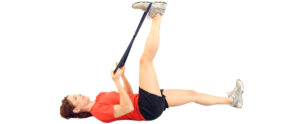
Supine Hamstring Stretch:
- Lie on the back, starting with both the knees bent. Wrap a rope or towel around one foot of the self. While holding both ends of the towel slowly lifts 1 leg off the floor until a stretch is felt in the back of the leg.
- Hold this position for 20 secs. Return to the starting position.
- Repeat 3 times on each side.
- Perform 2 times per day.

Knee to Chest:
- In supine lying with both knees bent. Grab behind one knee & gently pull the knee towards the chest until a comfortable stretch is felt in the lower back.
- Hold Knee to Chest: position for 20 secs then return to starting position.
- Repeat 3 times on each side.
- Perform 2 times per day.
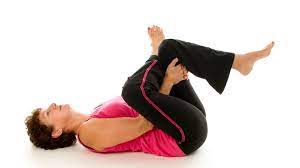
Piriformis Stretch:
- In supine lying with both knees bent. Pull one side of the knee to the opposite shoulder. Keep the back flat, do not twist.
- Hold this position approx for 20 secs then return to the starting position. Repeat 3 times on each side.
- Perform 2 times per day.
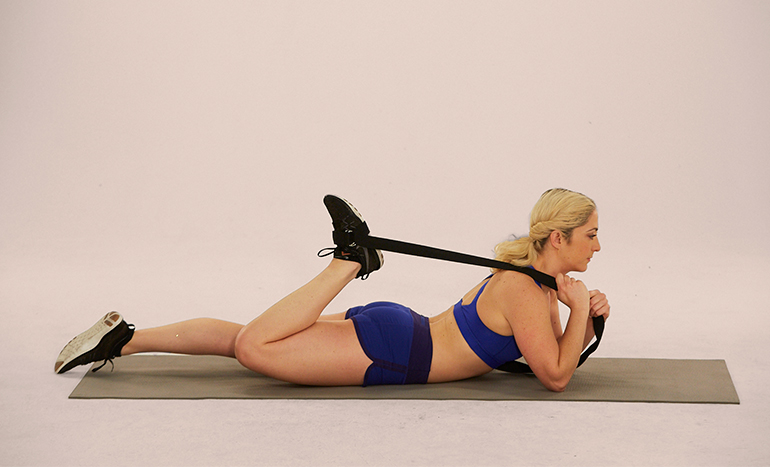
Prone Quadriceps Stretch:
- Lie down on your stomach. Put a rope, sheet, or belt around one of the feet & pull the heel toward the buttock until you can feel a stretch in the front of the thigh.
- Hold this position approx for 20 secs then return to the starting position.
- Repeat 3 times on each side.
- Perform 2 times per day.
Calf stretch:

- Stand facing a wall. Keep back leg straight with heel on surface & foot facing forward.
- Bend the front knee slightly & lean towards the wall until a stretch is felt in the calf.
- It is necessary to keep the back heel on the surface throughout the entire stretch.
- Hold this position approx for 20 secs. Return to starting position.
- Repeat 3 times on each side.
- Perform 2 times per day.

Sphinx stretch:
- Lie on the stomach with the elbows underneath the shoulders & the hands extended in front, palms facing down.
- Set the feet slightly apart. It is ok for the big toes to touch.
- Gently engage the lower back, buttocks, & thighs as you lift the head & chest.
- Stay strong in the lower back & abdominals, breathing deeply.
- Press the pelvis into the floor.
- Gaze straight ahead or gently close the eyes.
- Hold this pose for 30 secs-1 min.
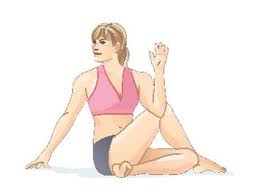
Seated spinal twist:
- Sitting on the floor with both legs extended out in front.
- Bend the left knee & place the foot to the outside of the right thigh.
- Place the right arm on the outside of the left thigh.
- Place the left hand behind you for support.
- Starting at the base of the spine, twist to the left side.
- Hold this pose for up to 1 minute.
- Repeat on the other side.

Supine Butt Lift Stretch:
- Lying down on the back with both knees bent & feet flat on the floor.
- Push down through the feet as you slowly lift the bottom off the floor.
- Hold for a count of 10secs.
- Return to starting position.
- Repeat 9 more times.
Prevention :
- You might avoid back strain pain or prevent its recurrence by improving your physical condition & learning & practicing proper body mechanics.
To keep your back healthy & strong:
- Exercise. Regular low-impact aerobic activities that don’t strain or jolt the back can increase strength & endurance in the back & allow the muscles to function better. Walking & swimming are good choices. Talk with the doctor about which activities you might try.
- Build muscle strength & flexibility. Abdominal & back muscle exercises, strengthen the core and help in the condition of these muscles so that they will work together like a natural corset for the back.
- Maintain a healthy weight. Being overweight strains back muscles. If you are overweight, losing some weight might be helpful for the prevention of back pain.
- Quit smoking. Smoking increases the risk of low back pain. The risk increased with the number of cigarettes smoked per day, so quitting should help reduce this risk.
Avoid movements that twist or strain the back. Use the body properly:
- Stand smart. Do not slouch. Maintain a neutral pelvic position. If you must stand for long periods, place 1 foot on a low footstool to take some of the load off from the lower back. Alternate feet. Good posture will decreased the stress on back muscles.
- Sit smart. Select a seat with good lower back support, armrests & a swivel base. Placing a pillow or a towel roll in the small of the back can maintain its normal curve. Keep the knees & hips level. Change the position frequently, at least every half-hour.
- Lift smart. Avoid heavy lifting, if possible, but if you try to lift something heavy, let the legs to do the work. Keep the back straight no twisting & bend only at the knees. Hold the load close to the body. Find a partner for lifting if the object is heavy or awkward.

